Fin Essentials
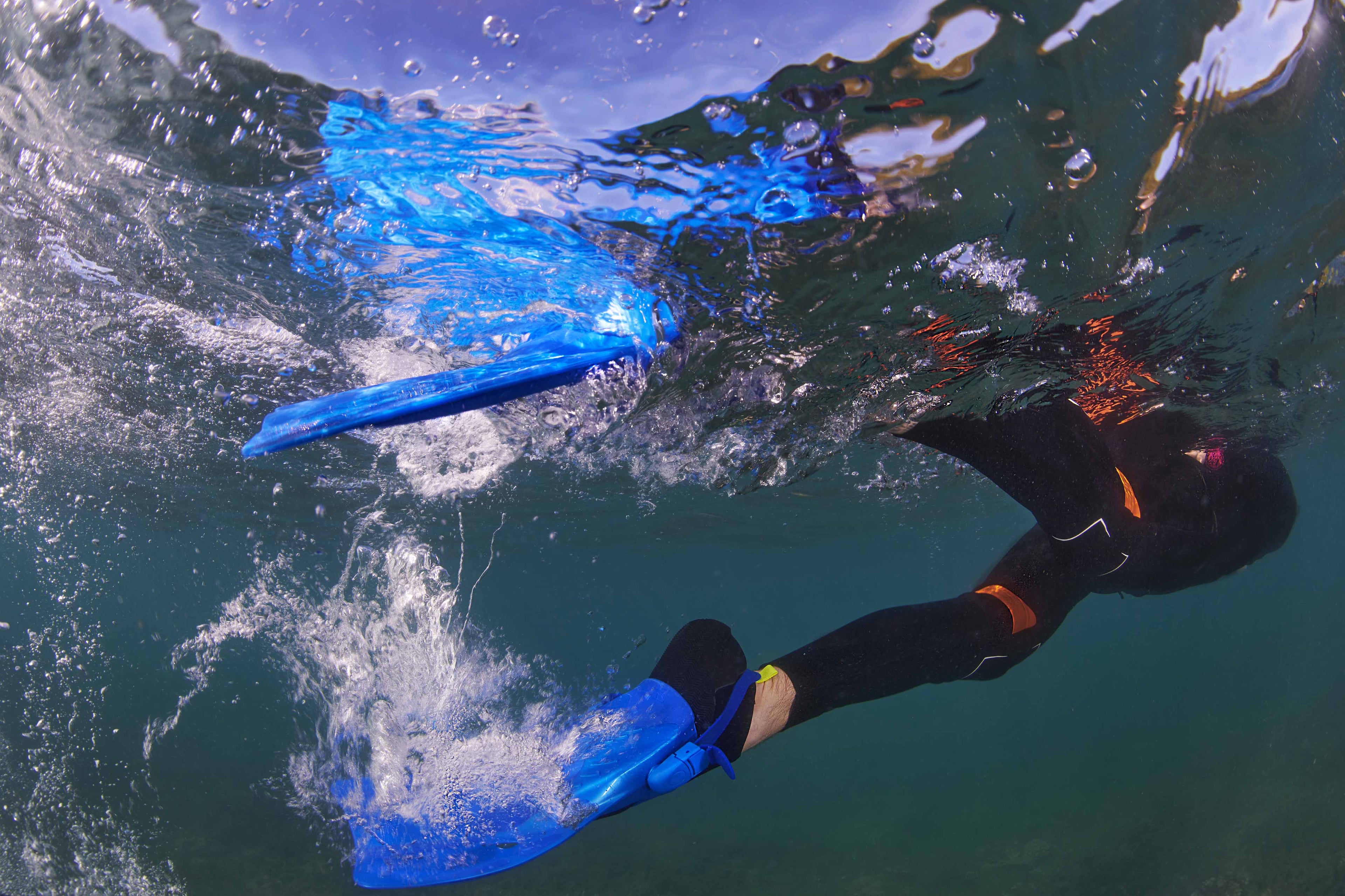
The Purpose of Fins
Fins allow you to move efficiently through water. There are many types of fins available depending on the activity they are to be used for. Fins can be used for swimming, snorkeling, scuba diving, and free diving. The wrong type of fin can drastically change your experience, so we’re going to help you understand how to make the right choice. It’s best to narrow down the fin you purchase based on the activity they will be used for.
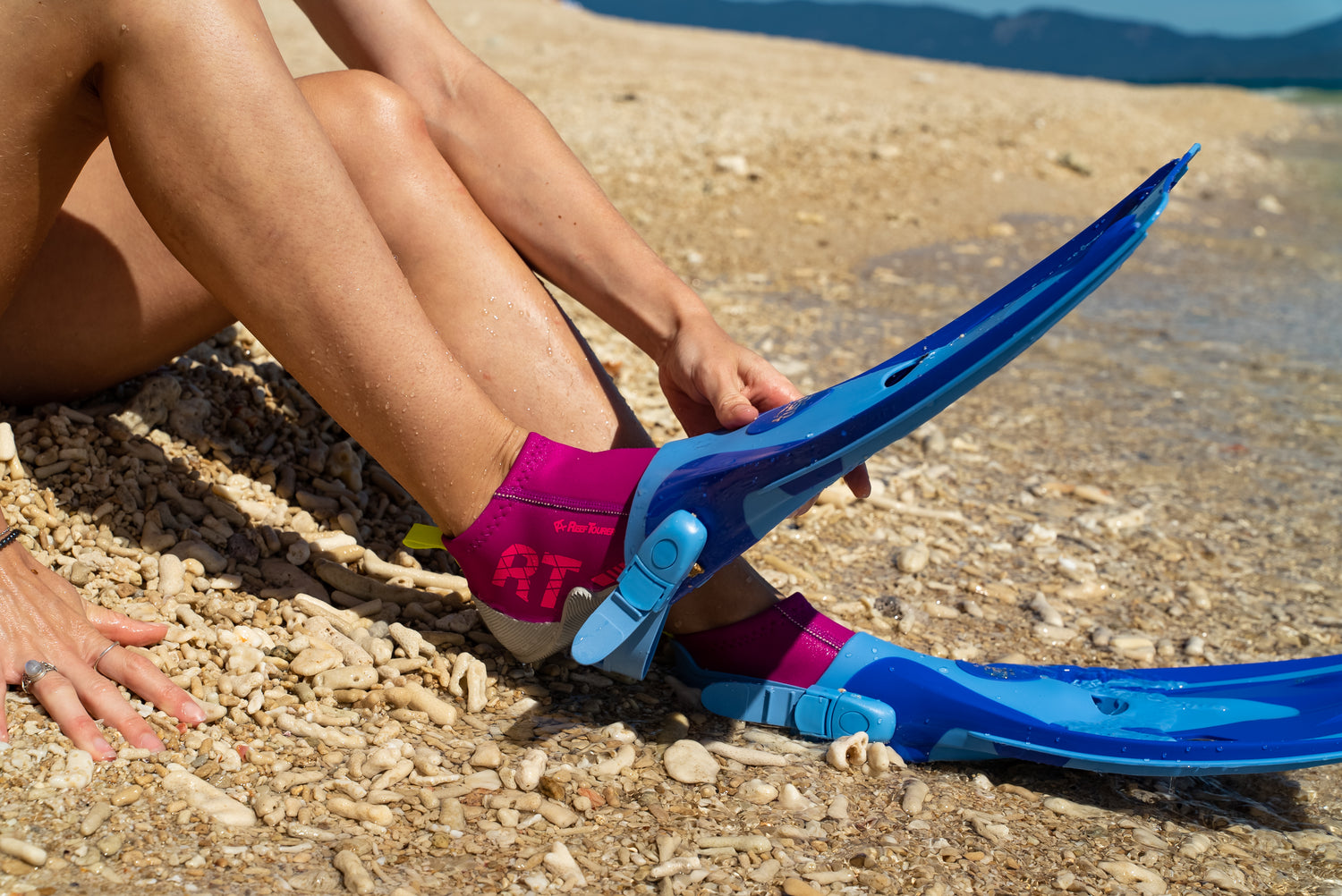
Fin Features to Look For
∙Strap type
∙Open heel or full foot
∙Blade vents/water channel
∙Blade rails
∙Material (Plastic/Rubber/Polyurethane)
∙Flexible foot pocket
∙Blade strength
∙Blade length
What's the Difference Between Snorkeling or Scuba Fins?
-
Snorkeling Fins
Snorkeling can be done with little to no experience, but it does require additional gear. Although not required for swimming, fins are highly recommended, and are critical for your safety, especially when dealing with stronger currents. They help you generate power to easily propel yourself along the surface, as well as help you dive down to get a closer look at wildlife. They protect your feet from cutting your feet on rocks or coral. Fins for snorkeling are traditionally shorter in length, lightweight, travel friendly, and capable of being worn barefoot.
-
Scuba Fins
Fins for scuba diving generally should be more powerful than snorkeling fins because of the weight of the additional gear required. Since conditions can vary, you need to have the proper fins to maneuver those conditions. A scuba fin is usually longer in length, heavier, and made from more durable materials. They also have a stiffer side railing to keep from bending too easily so that you can still propel forward. Typically, scuba divers prefer an open heel fin paired with a boot to keep warm for lower temperatures experienced at depth. That being said, a split fin can work well when conditions are warmer and calmer.
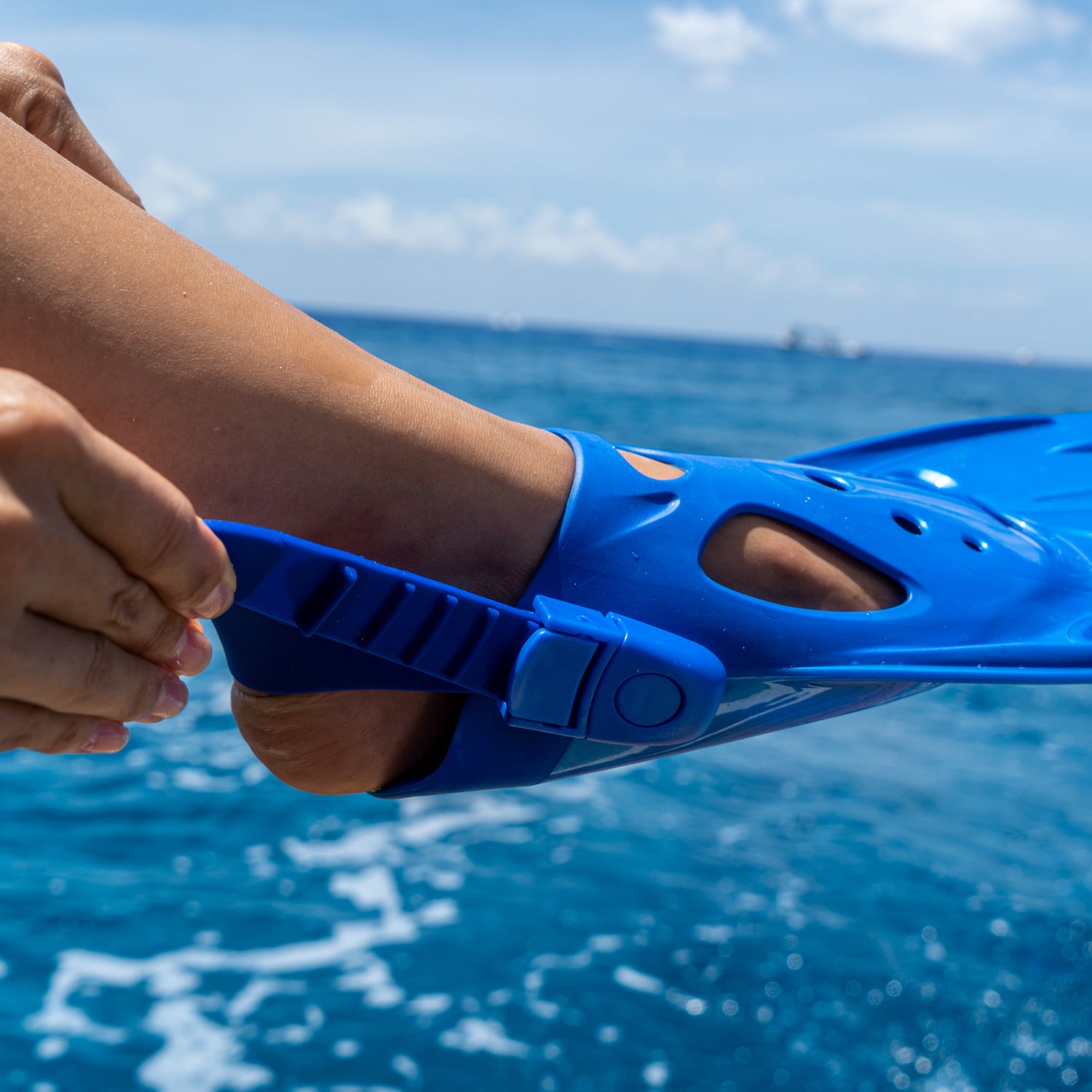
Open Foot or Open Heel Style Fins
These are most commonly used for scuba diving but not limited to that.
You can wear this type of fin with booties, which is recommended because booties protect your feet and provide warmth. They also cushion your foot in the fin which cuts down on blistering, allowing you to kick for longer periods of time.
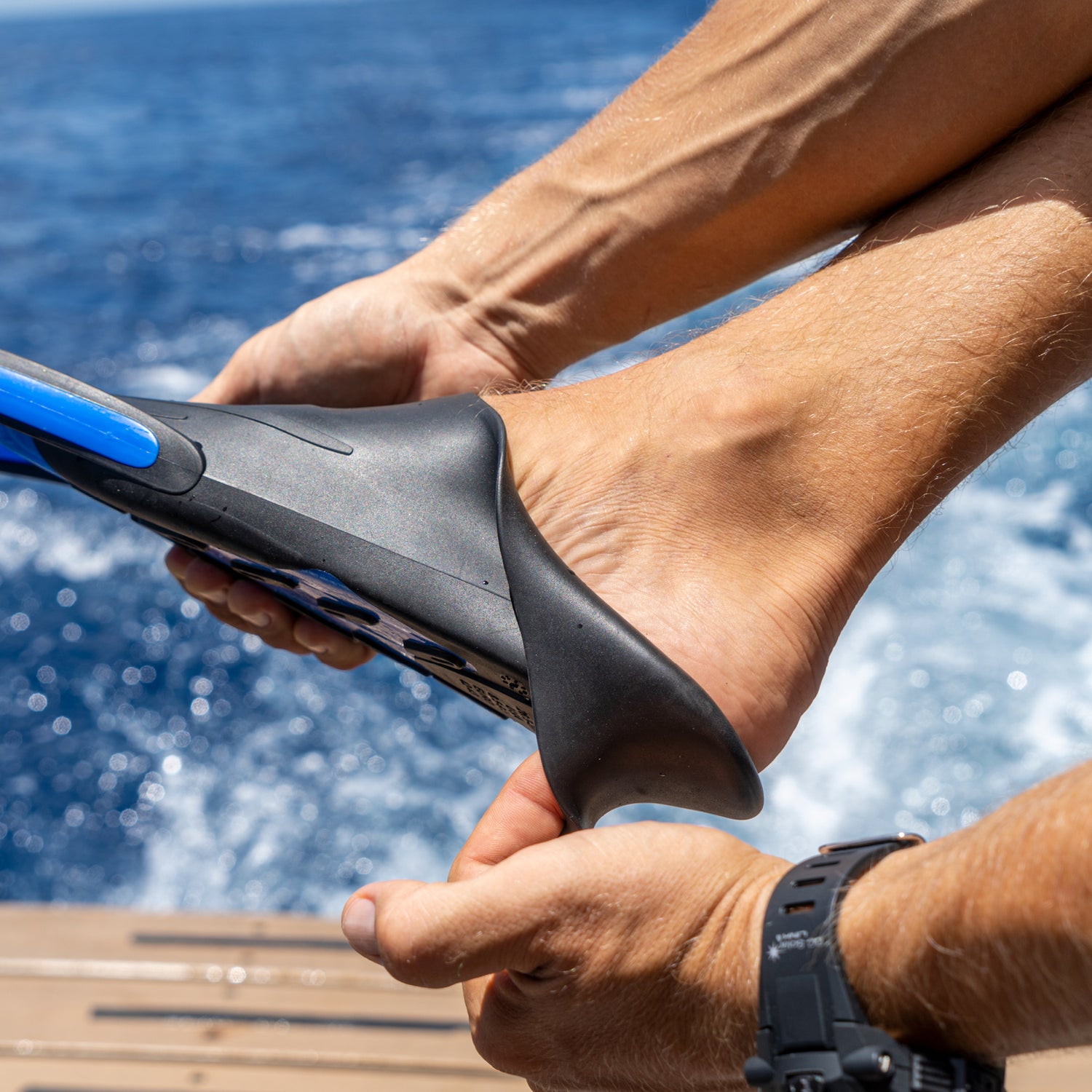
Closed Foot or Full Foot Style Fins
A full foot pocket doesn’t require any adjustment. You can slip your bare foot into them so they aren't worn with booties. They are usually made of a soft rubber material to be flexible on the foot.
When wearing full foot fins, be sure that they are the perfect fit because a too tight or loose fit can lead to discomfort, and in many cases, blistering. You can optionally wear neoprene socks with this type of fin, but make sure you have them with you when you try on the fins. Full foot fins are mainly used in warm water environments.
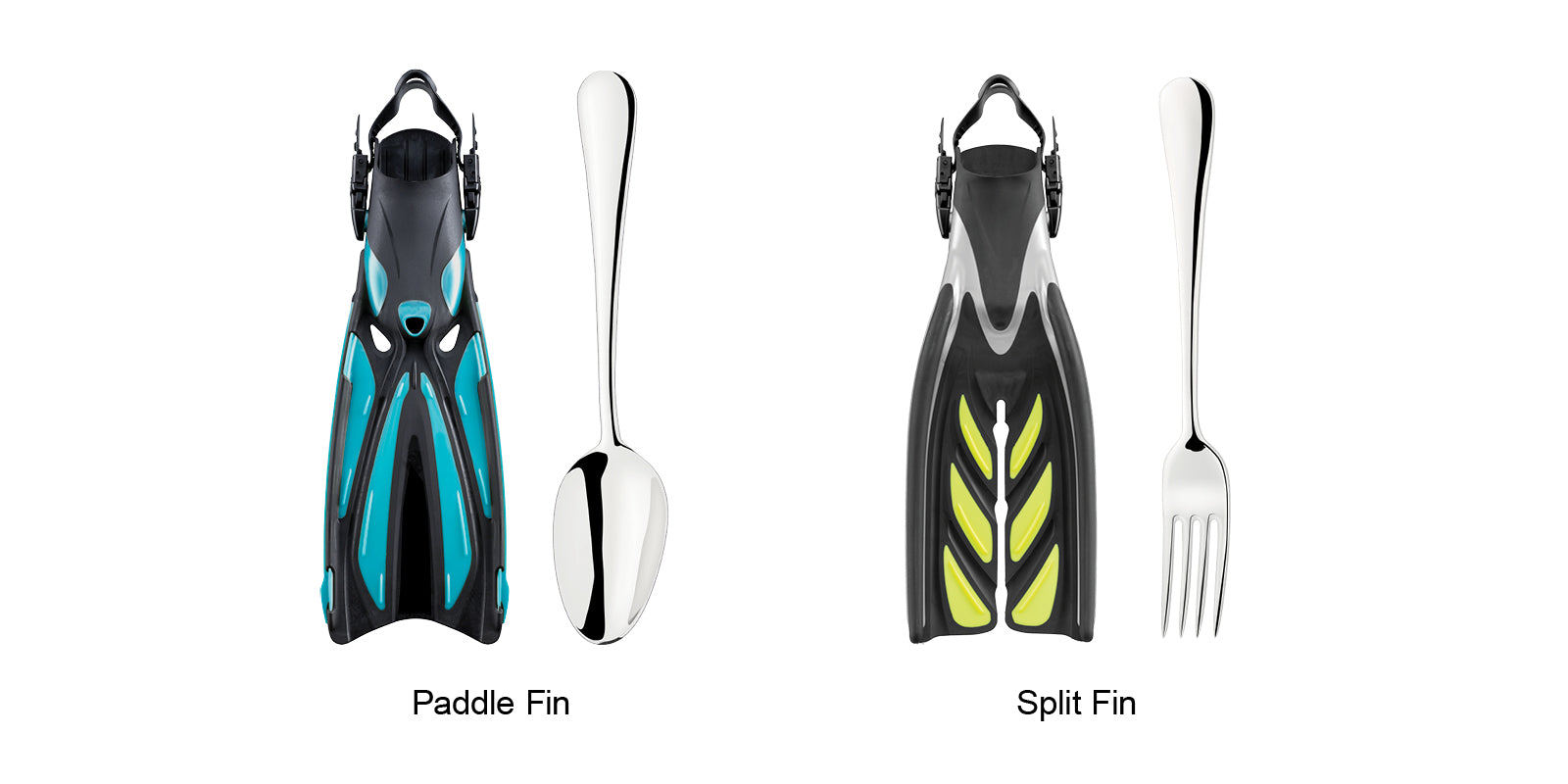
Paddle Vs. Split Fins
What's the difference?

Paddle Fin
Paddle fins are the more traditional style of fin. Since the surface of a paddle fin is large and flat, it pushes against the water in both upward and downward kicks, giving you maximum power and propulsion. Paddle fins also offer a greater variety of kicks.
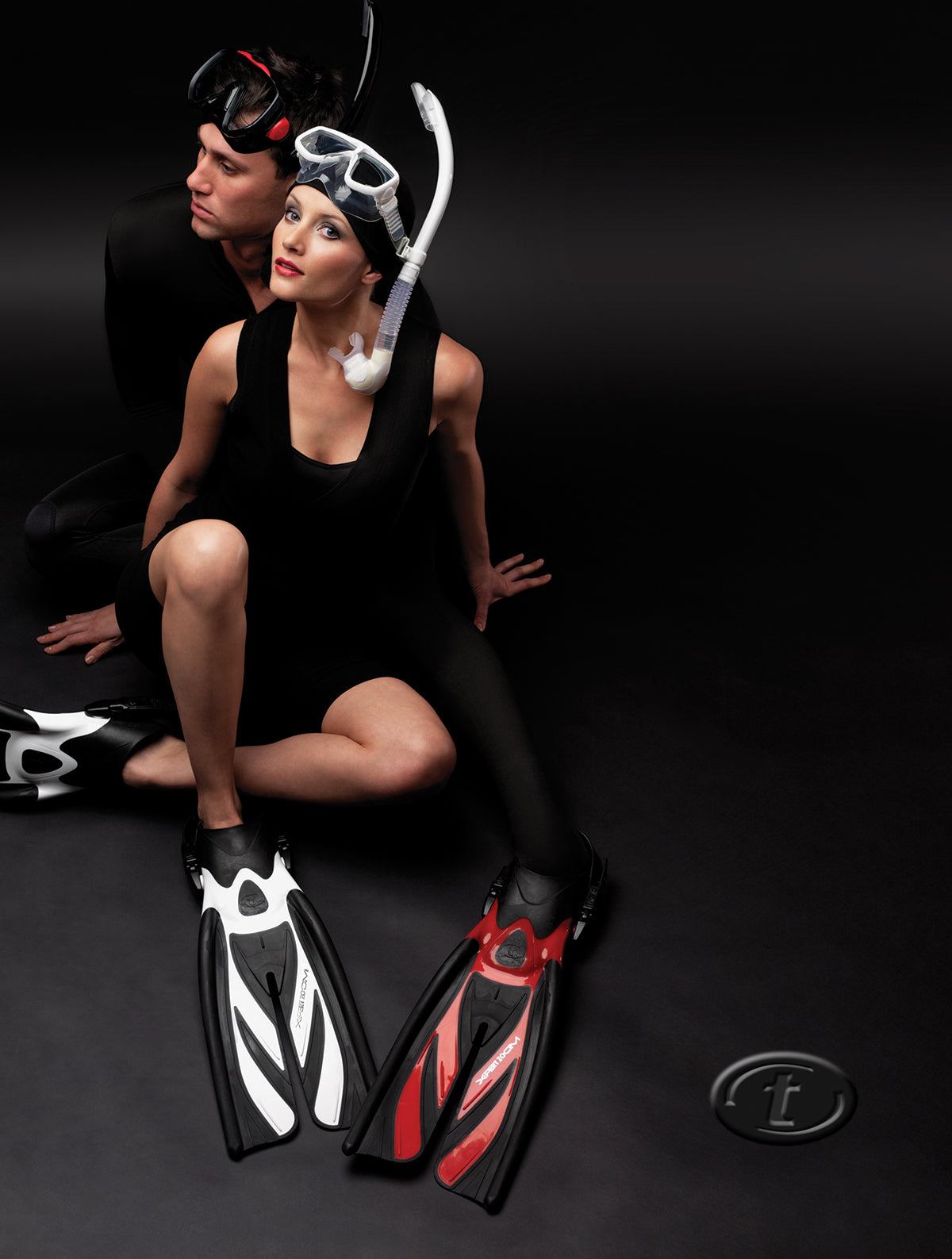
Split Fin
The split in the fin creates a vortex that assists in propulsion and speed. Since the upward fin stroke is the motion that generates the least amount of propulsion, having the split in the blade allows some relief on your legs and air conservation by allowing water to pass through and not create additional drag. Split fins are great for casual snorkelers, but since most of your kicking power takes place on the surface using a bent-knee kicking method, they are not as ideal as a fin with more surface area. You need as much blade as possible to push you along the surface. Split fins are ideal when fully submerged. They are also great for divers or people inexperienced in the water that are still trying to develop their technique.
Fin Strap Types
-
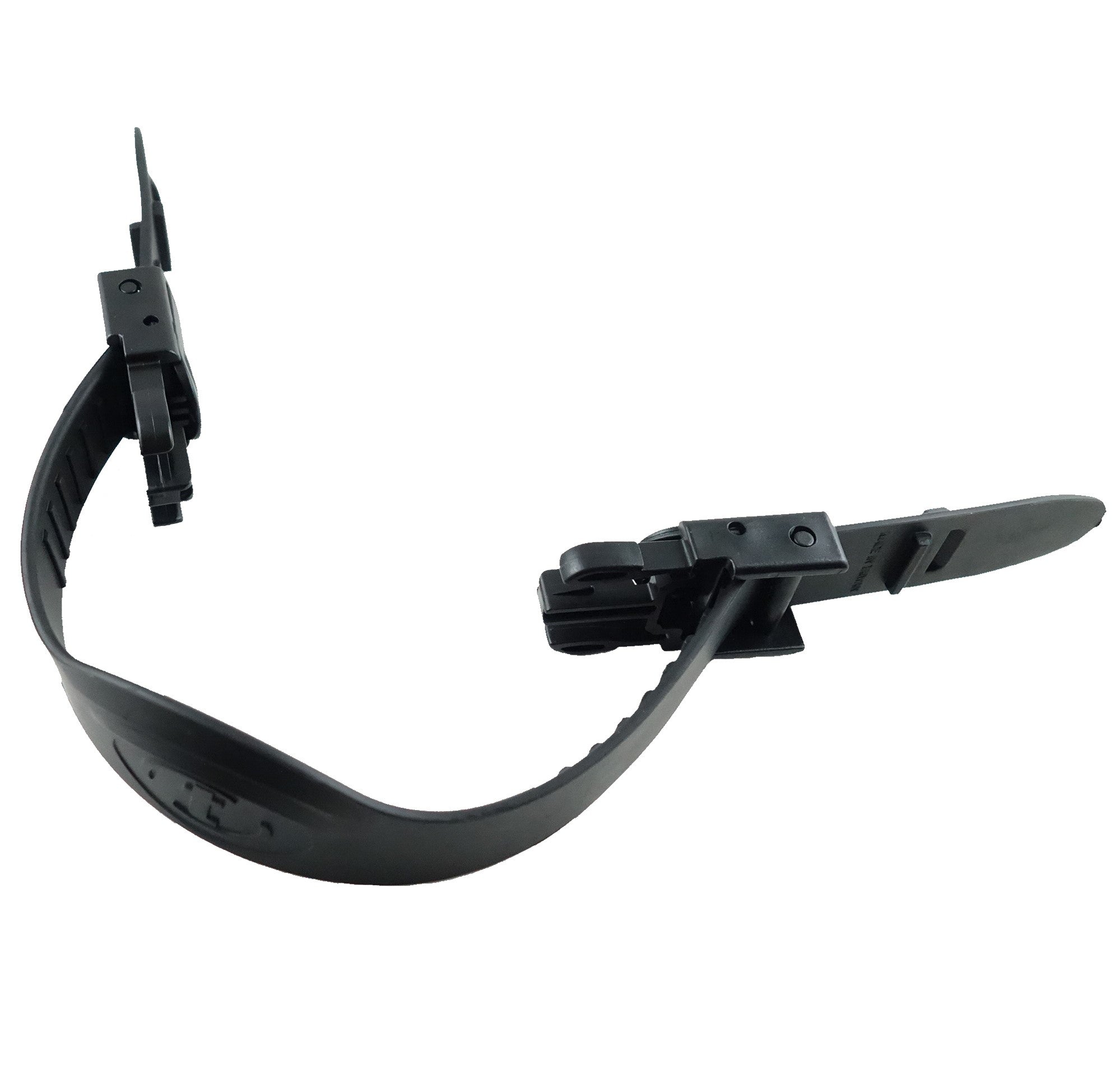
Silicone Adjustable
This is the standard adjustable fin strap you’ll find on most fins off the shelf. Although their lifespan is less than the other options, they are easy to find inexpensive replacements for.
-
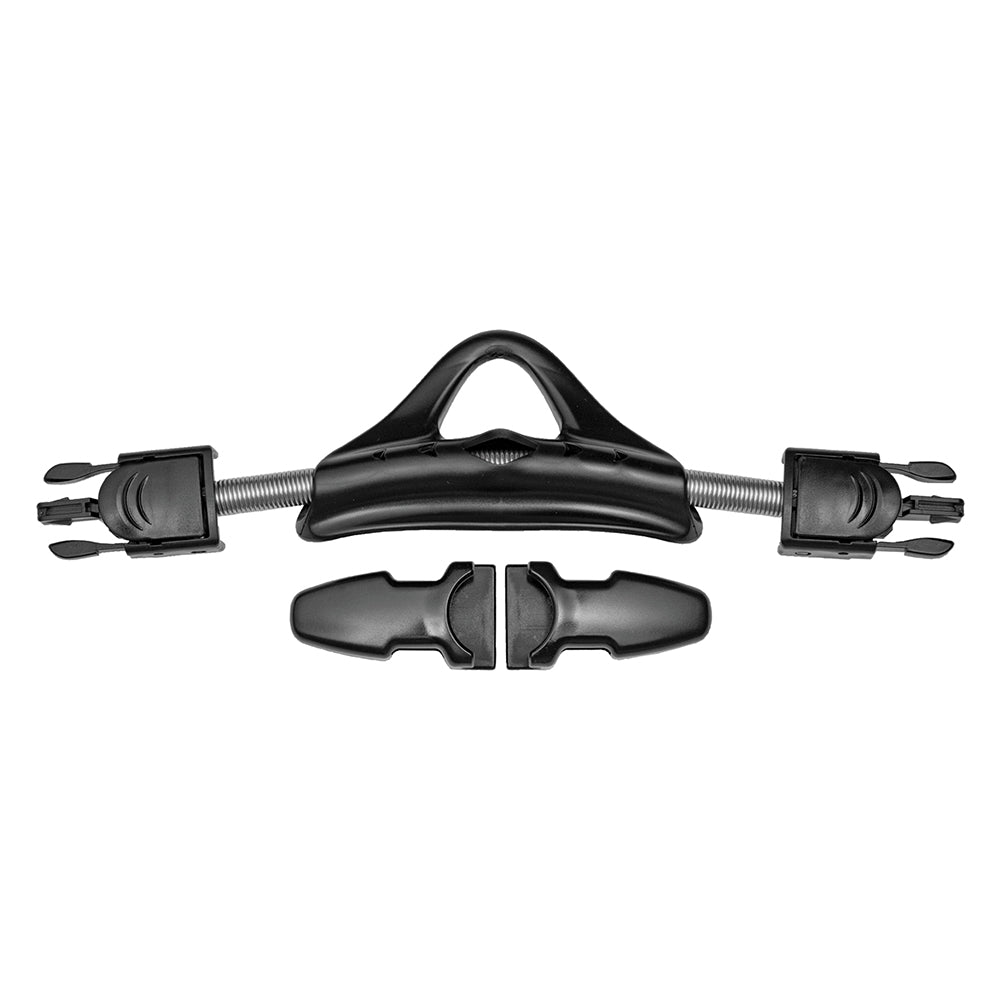
Spring
This design allows you to simply reach down and pull the strap up to your heel without any additional adjustments.
-
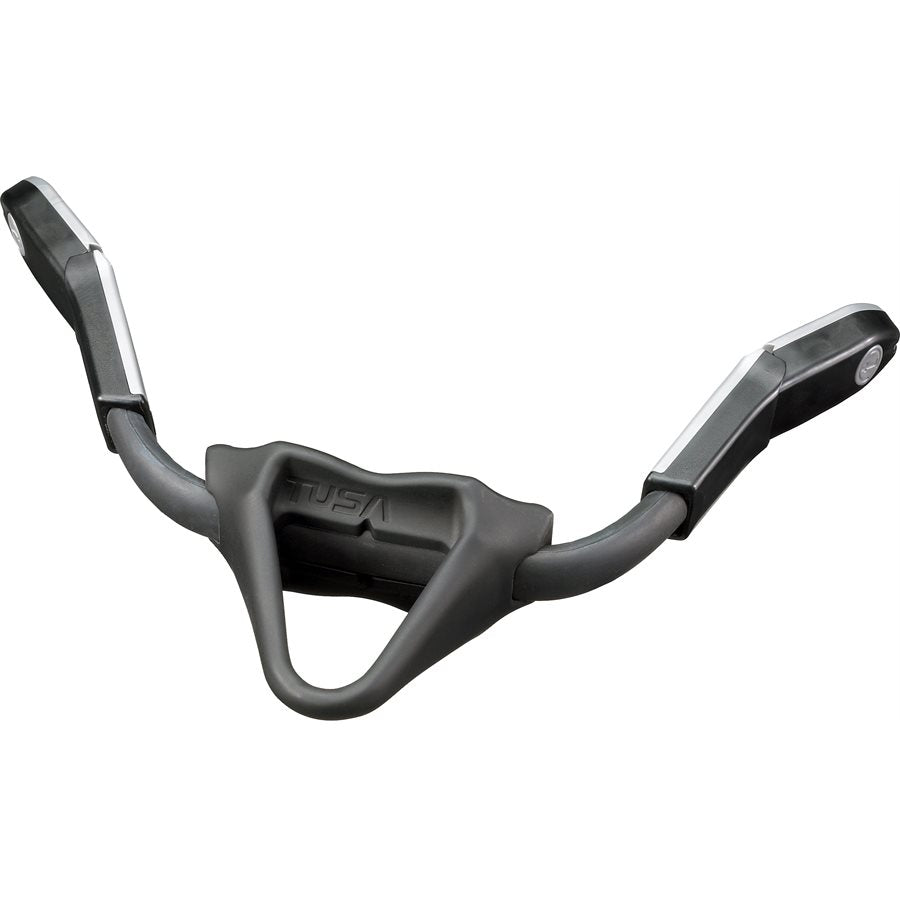
Bungee
Similar to the spring straps, no adjustments are required. They are made of an elastic rubber cord that cannot rust like the metal spring strap.
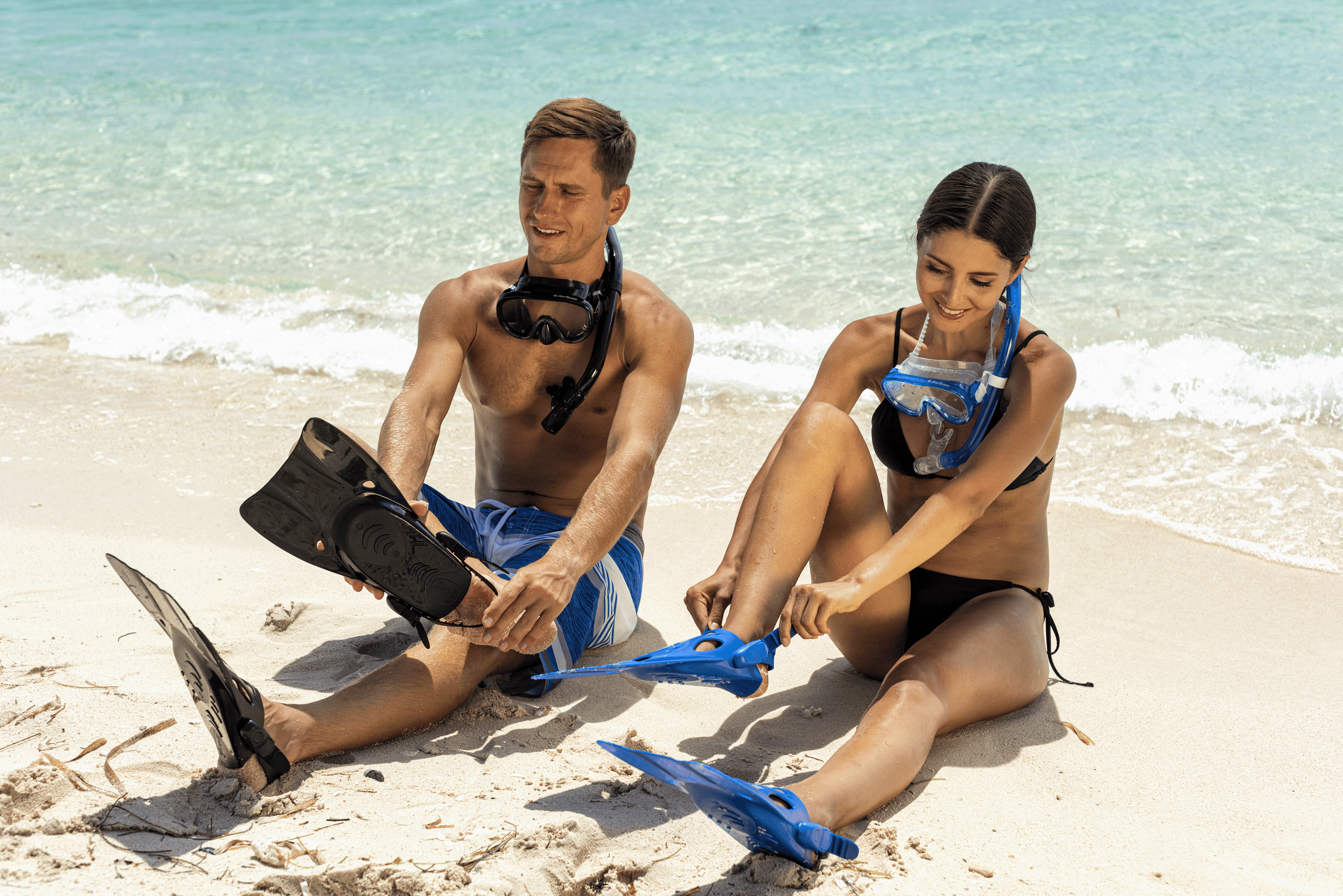
Types of Fin Kicks
-
Flutter Kick
The Flutter Kick is the vertical up and down motion of your entire leg from thigh to toes. This is the most powerful kick and allows you the most propulsion and ability to get through currents easily. It is also the most energy consuming kick. It is not recommended to flutter kick when close to the ground because you will kick up lots of sand and silt.
-
Frog Kick
The Frog Kick is a wide kick that utilizes the full strength of your legs. It's great for snorkeling or diving close to the ground so that you don’t kick up sand or disturb coral.
-
Bent-Knee Kick
The Bent-Knee Kick causes the least amount of strain and air consumption. With smaller movements from your hips and ankles, you can get through tighter spaces using this method. It's the most common kick used for snorkeling.
Care & Maintenance:
- Rinse your fins in fresh water after each use and let it air-dry in the shade.
- Store in a cool, dry place, out of direct sunlight. Over time the sun can cause the plastic material to weaken, fade in color, and possibly crack.
- Check for any defects before each use.
- Check that your straps are in good condition.
- Personalize your gear for if you join a busy boat or at the beach. Use a gear marker to put your name or initials inside the foot pocket.
- You should be prepared with a spare fin strap since they will eventually break unless you have spring straps.



